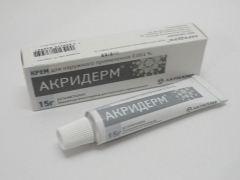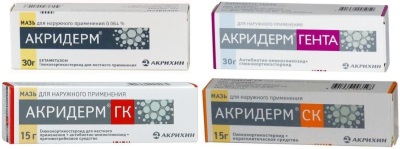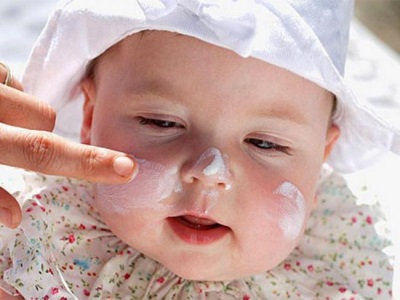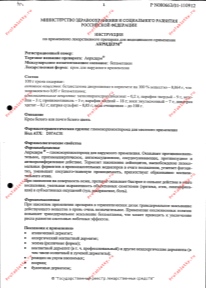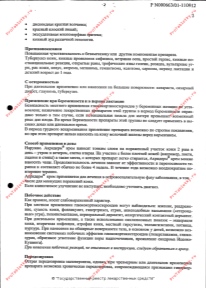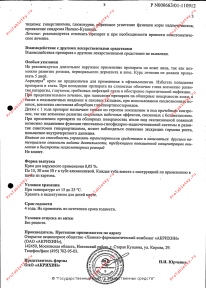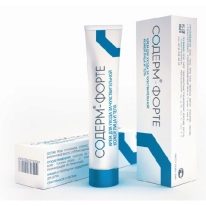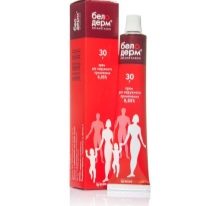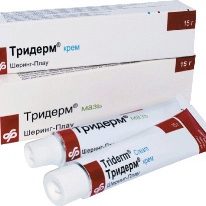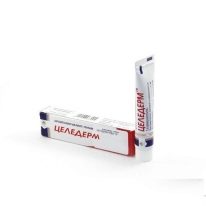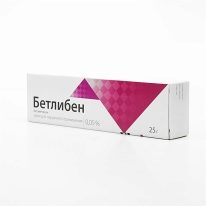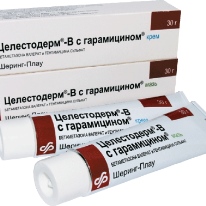Akriderm for children
In the treatment of allergic skin lesions and other skin diseases, hormonal drugs are often used, among which Akriderm is very popular. What nuances include instructions for use of this drug and can children up to one year lubricate the skin with Acriderm?
Composition
The main active substance in Akriderma is represented by the steroid hormone betamethasone.. In the cream, this compound is supplemented with solid and liquid paraffin, wax, purified water, petroleum jelly, sodium sulfite, disodium edetate and preservative E218. In addition to betamethasone, vaseline, liquid paraffin, preservative E216 and isopropyl myristate are present in the ointment.
Also produce drugs in which betamethasone supplemented with other active ingredients:
- Akriderm Ghent. Gentamicin is added to the hormone in this remedy (1 g of the drug contains 1 mg of this antibiotic).
- Akriderm SK. Such a preparation contains not only betamethasone, but also salicylic acid in the amount of 30 mg per 1 g of the drug.
- Akriderm GK. In addition to betamethasone and gentamicin, this drug is present clotrimazole (1 g of the drug contains 10 mg of such antifungal agent).
Release form
Akriderm is available in the following forms:
- 0.05% cream. It has a white color and light texture, quickly absorbed into the skin. There are tubes for sale that contain 15 grams, 30 grams or 50 grams of cream.
- 0.05% ointment. It is a translucent thick substance of white or white-yellow color. It is packed in tubes of 15 and 30 grams.
Akriderm Ghent and Akriderm GK are also produced in the form of a cream and as an ointment, and Akriderm SK is an ointment. All these dosage forms are produced in two packaging options - in tubes of 15 grams each and in tubes of 30 grams each.
Promotional video of the drug Akriderm GK:
Operating principle
The drug Akriderm attributed to hormonal drugs that are used externally. Its active substance penetrates the skin cells and has anti-allergic and antipruritic, as well as anti-inflammatory effect. Betamethasone reduces the severity of inflammation by blocking the release of enzymes and mediators in the affected skin, and also prevents phagocytosis and accumulation of leukocytes. In addition, it affects the walls of blood vessels, reducing their permeability, which helps to eliminate swelling. As a result, an allergic rash quickly passes.
Watch a video in which a practicing dermatovenerologist talks about the features of the use of various types of Acriderma in adults and children:
Indications
Purpose Acriderma is most common in allergic diseases affecting the skin:
- With contact dermatitis.
- With atopic dermatitis.
- With sun dermatitis.
- With skin itching.
- With dishydrotic dermatitis.
Also, this drug can be used for non-allergic skin inflammations, for herpes (red flat), psoriasis, ichthyosis, neurodermatitis, or systemic lupus erythematosus. Akriderm GK is also prescribed for ringworms, including lesions in large skin folds and pubic.
Watch the release of Dr. Komarovsky’s program, which details the causes of children's dermatitis, its prevention and treatment methods:
At what age is it allowed to take?
The use of Akriderma is permissible after the age of 12 years.If the drug is prescribed to a child under the age of 12 (for example, in case of allergic dermatitis at 2 years), its use should be under the supervision of a physician. In pediatric practice, Akriderm is prescribed to children older than a year.
Contraindications
Acridem is not prescribed:
- After vaccination (if there are complications on the skin).
- Children with tuberculous skin lesions.
- With perioral dermatitis.
- Children with viral infections affecting the skin, such as chickenpox.
- With pink acne.
- A child with hypersensitivity to any ingredient in the composition of the tool.
Do not lubricate open wounds or trophic ulcers with medicine. On the skin of the face, the use of Akriderm is limited in duration (up to 5 days). Apply the medicine in the eye can not, because it can provoke a fungal or herpetic lesion, as well as glaucoma or cataract.
Side effects
Burning, peeling, or skin irritation may occur at the site of application.. Some children may develop contact dermatitis or folliculitis. Also, the use of this drug can provoke hypopigmentation, the appearance of stretch marks and hypertrichosis.
If an occlusive dressing is applied to the skin after applying Acridem, this may cause infection or prickly heat. In addition, this use of medication causes its more rapid absorption, which leads to a systemic effect on the children's body, for example, the development of Cushing's syndrome.
The use of Acriderm Gent or Acriderm GK can cause hearing loss or renal dysfunction due to the presence of gentamicin in these forms.
Instructions for use and dosage
Acridem is applied to the affected skin one to three times a day. In this case, a layer of ointment or cream should be thin. When applied, the product is easily rubbed into the skin.
If the skin is cracking and dry, then they prefer to use an ointment, and with a weeping lesion they choose a cream. For a more uniform application, it is possible to mix with baby cream, but it will not work to mix baby cream and Acridem ointment. Children's cream should be mixed only with Akriderm cream.
Most often, the skin is lubricated twice a day with an equal interval, for example, at 9 am and in the evening at 21:00. At the initial stage, a single lubrication per day is sufficient, and if the disease is started, the doctor may prescribe a different dosage and frequency of application.
Duration of use Akriderma - up to 3 weeks. If after 14 days from the start of treatment no positive changes are found on the skin, the medicine is canceled and a doctor is consulted to clarify the diagnosis. If treatment is required to continue, consultation of the doctor is also needed.
Overdose
If you lubricate the skin of the child with ointment or cream Akriderm in excess, it can affect the pituitary-adrenal system. The result will be an insufficiency of the adrenal cortex, which is called secondary. It will manifest itself by various symptoms of hypercortisolism, among which are acne, stretch marks, the appearance of excess fat, and others. Also, these children may increase intracranial pressure, slowing the increase in weight and growth.
For children with an overdose of Acriderm, symptomatic therapy is prescribed. In most cases, the acute manifestations of excessive use of such drugs are reversible. If required, electrolyte imbalance correction is performed.
Interaction with other drugs
The use of Akriderma does not affect the treatment with other drugs, therefore, no restrictions on the use of ointment or cream together with other drugs are not defined.
Terms of sale
You can buy Akriderm for children in a pharmacy without a prescription.
Storage conditions and shelf life
Akriderm recommend keeping in a place where the child can not get.The optimal temperature conditions for the storage of such drugs - 15-25 degrees Celsius. From the time of manufacture the drug should be stored for 2 years.
Reviews
Most of the parents who used Akriderm for diathesis and other skin diseases in children were satisfied with this medicine. They leave positive reviews, calling the drug affordable and highly effective from skin allergies. The disadvantage of Acriderma is called its hormonal nature, due to which the duration of use of the drug is limited.
As habituation develops, some parents refuse treatment with Akriderm. Those who decided, after the appointment of a doctor, to smear the affected skin of their child, note that the medicine acts rather quickly, helping to get rid of itching and redness.
Analogs
Replacing Akriderm with allergic skin lesions can be such drugs:
- Beloderm.
- Celestoderm-B.
- Triderm.
- Zelerm.
- Betlieben.
- Betazon.
- Diprospan.
- Celeston.
- Betaspan.
- Soderm.
